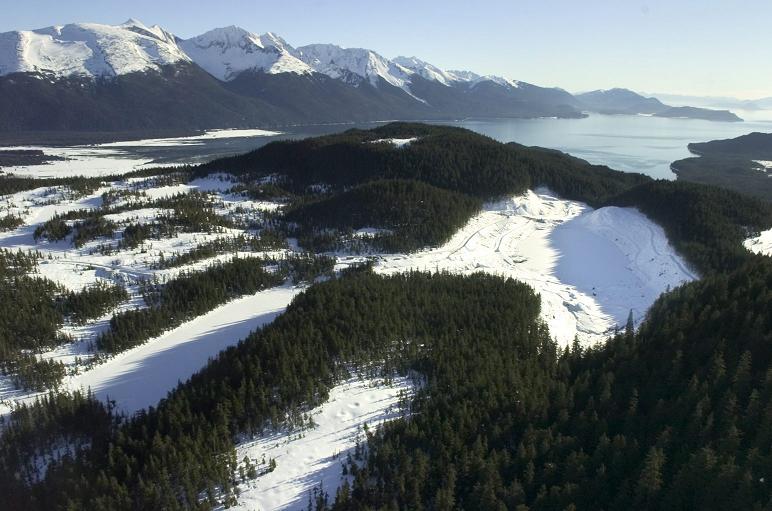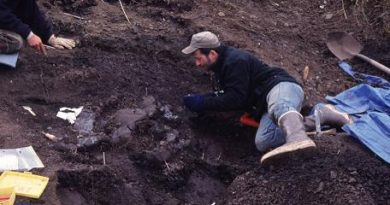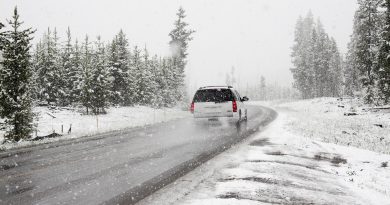Southeast Alaska land swap on the brink

More than 40 years after Alaska aboriginal land rights were decided by the Alaska Native Land Claims Settlement Act, that process is nearing a close with the pending transfer of tens of thousands of Tongass National Forest land to Sealaska Corp., the regional Alaska Native Regional Corporation for Southeast Alaska.
Bills sponsored by members of Alaska’s U.S. Congressional delegation would do exactly that, but they would also do something even more important for Sealaska.
They would enable the Juneau-based company to choose lands from outside areas in which they were originally allowed to select. Those new areas include timberland of much higher value as well as important sites for tourism, recreation, power and other things.
That’s led to several years of deadlock in Congress, as the company’s neighbors, environmental groups and others have objected to the transfer. In the last two sessions of Congress, legislation has stalled.
Now new negotiations led by U.S. Sen. Lisa Murkowski, R-Alaska, has produced a new version of the transfer legislation that has Sealaska within reaching distance of finalizing its land selections.
“We believe we are very, very close, said Byron Mallott, a member of Sealaska’s board of directors and a long-time leader on the lands-selection issue.
78,000 acres to Sealaska
The recent negotiations have resulted in “a bill that as many folks as possible within our region and elsewhere can support,” he said.
Sealaska currently has about 290,000 acres of land, and Murkowski said the company has agreed that the 78,000 acres in her bill would complete its entitlement.
Murkowski said the progress has come because Sealaska has backed off some of its hopes for selecting areas of old-growth timber, which has high economic value but also brings controversy.
“Sealaska is now taking four times less acreage that contains old growth,” Murkowski said, with those changes being among dozens made to earlier versions of the legislation.
The new Senate Bill version, S.340, even has the support of the Southeast Alaska Conservation Council, the region’s leading environmental group.
Those changes now have the lands bill on the verge of being able to pass, Murkowski said.
“I think we’re close to working out the final few points of contention,” she said at an April hearing on the bill, the Senate’s version of the lands conveyance legislation. Alaska Democratic Sen. Mark Begich is a co-sponsor.
Most environmentalists back measure
Southeast Alaska Conservation Council attorney Buck Lindekugel said that while not all environmental groups agree on strategy, the Murkowski version is a major improvement.
“We think we can influence the outcome of this legislation more by continuing to work with Sen. Murkowski than not,” he said.
In addition to protecting environmentally sensitive areas, it also pledges to keep lands open to the public for a period of time, he said.
The bill still faces concerns, however, including some environmental concerns and opposition from communities in or near the likely land selections. That’s mostly in southern Southeast Alaska, with many of the selection sites on or near Prince of Wales Island, the largest island in Southeast and the location of much of its marketable timber.
Rep. Don Young’s version of the land conveyance bill, H.R. 740, would give the company more of the valuable old-growth timber it wants, which Young, in committee discussions, said was of little value.
“Old-growth timber in Southeast is truly old growth, and it’s dead,” he said. “It has little value because we’ve eliminated the pulp mills and that’s the facts. People don’t agree, but that’s the facts. Old-growth timber is not necessarily good timber,” he said.
Sealaska appears to disagree, however, selecting as much old growth as it can.
Young’s bill contains much more old growth than Murkowski’s Senate version.
Neighbors near lands likely to be selected worry that the transfer to private Native corporation ownership may hurt them. Worries include the impact of clear-cutting on old-growth forests and lack of access.
Will other Native Corps. mimic Sealaska?
Professional hunting guide Jimmie Rosenbruch from the northern Prince of Wales community of Edna Bay said he’s been guiding for 40 years, and three of his children have followed him into the business.
“I think they’re going to want to do what we’ve been doing, long after a period of 10 years has passed,” he said.
Further clear-cutting that Sealaska is expected to do harms crucial habitat needed by wildlife, including the “loss of old growth trees under which deer can fine refuge during heavy snows and where black bear den up,” he said.
One additional challenge facing the bill was from critics who warned that it could reopen the ANCSA lands selection process for other Native corporations, and somehow re-ignite a battle that had seemed over.
Southeast’s Territorial Sportsmen worry that other corporations, seeing the gains made by Sealaska, will seek similar legislative benefits, warned Wayne Regelin, president of the group.
“Reopening of Native land claims will have a stifling impact on Alaska’s economy for years,” he said.
Murkowski doubts that would, or could, happen. Sealaska is unique, she said, in that it is the only Native corporation with land entitlements left to select.
The bill has been modified to make it clear that it sets no precedent, she said, and the leaders of all the other regional corporations agreed that Sealaska has a unique situation.
The Forest Service agrees, said Jim Pena, associate deputy chief, told Murkowski at the April hearing.
“We believe the circumstances surrounding this legislation are unique, and no precedent would be created,” he said.
Murkowski said she’s surveyed other Native corporation leaders, and they agreed the Sealaska bill would not reopen their claims.
Pena said that while much progress has been made in the lands conveyance legislation, especially the Senate bill, the Forest Service isn’t ready to support it. However, the administration does support the goal of finalizing Sealaska’s lands selection, he said.
Sealaska’s Mallott said that while the company supports both bills, he personally favors Young’s House bill, which he said contains more justice and equity for Natives than does the Senate bill, but the Senate version is the one getting the most attention and is the one likely to drive the final resolution.
“I know from long, long experience that what the Native community can easily and passionately feel is equity and justice, for others that is often very hard to do. We are dealing with a fundamental reality here,” Mallott said.
Subcommittee hearings on the legislation have been held in both houses of Congress, with full committee hearings expected next.
Contact Pat Forgey at pat(at)alaskadispatch.com



